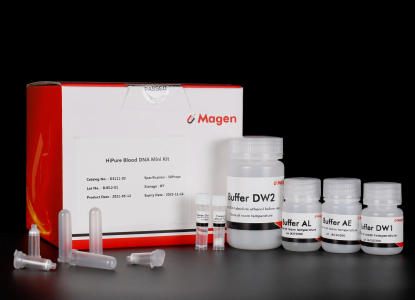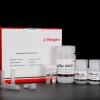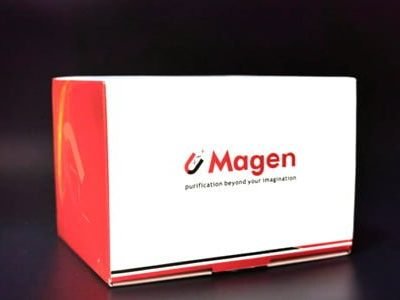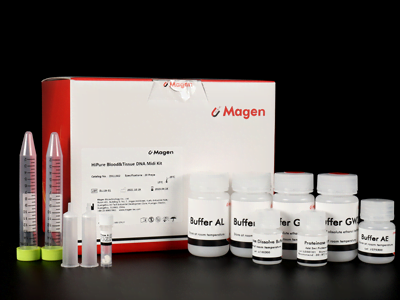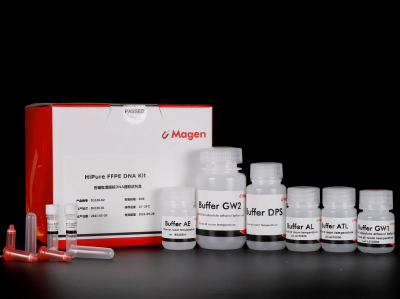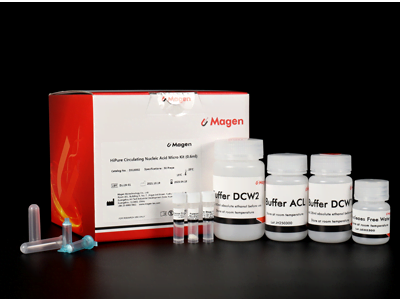介紹
Blood is a valuable source of DNA for various clinical applications and research studies. 然而, extracting DNA from blood samples presents several challenges:
Safety Concerns:
- Blood samples can harbor pathogens, posing a risk of infection to researchers and contaminating the lab environment.
- Traditional methods often involve hazardous chemicals like phenol-chloroform.
DNA Loss:
- Removing red blood cells, a common pre-treatment step can lead to the loss of desired DNA fractions like viral DNA, circulating DNA, and microbial DNA.
Impurities and Inhibitors:
- Blood contains various components that can interfere with downstream analyses like 聚合酶鍊式反應 和Southern印跡.
New Technology for Improved Blood DNA Extraction:
This product offers a novel approach to address these challenges:
- Safe and Efficient: The method eliminates the need for red blood cell removal, minimizing infectious waste and potential contamination.
- Comprehensive DNA Recovery: The protocol allows for the purification of total DNA, including genomic, mitochondrial, viral, and circulating DNA, providing a more complete picture for analysis.
- 廣泛的樣品相容性: The method effectively purifies DNA from various blood components like whole blood (fresh or frozen), 電漿, 血清, 白膜層, 和更多.
- Downstream Applications: The extracted high-quality DNA is suitable for reliable PCR and Southern blotting analyses.
This innovative solution simplifies blood DNA extraction while ensuring safety, efficiency, and comprehensive DNA recovery. It represents a significant advancement for researchers working in various fields like diagnostics, 法醫, and medical research.
規格
| 特徵 | 規格 |
| 主要功能 | Isolation total DNA from 200ul Whole Blood |
| 應用領域 | 聚合酶鍊式反應, 南方螺栓和病毒檢測, ETC |
| 純化方法 | 小型的 旋轉柱 |
| 淨化技術 | 二氧化矽技術 |
| 工藝方法 | 手動的 (離心或真空) |
| 樣品類型 | Whole Blood (fresh or frozen), 血清, 電漿, milk, 唾液, and other liquid samples and cultured cells |
| 樣品量 | <200μl whole blood or other liquid samples, <5*106 lymphocytes or Culture Cells Non-mammalian animals that have a nucleus in red blood cells (rich in DNA, such as birds and fish): 5~20μl whole blood at a time. |
| 洗脫體積 | ≥20μl |
| 每次運行時間 | ≤30 minutes |
| 每根柱的載液量 | 800微升 |
| 柱結合率 | 100微克 |
原則
Efficient DNA Purification with Silica Column Technology
This product utilizes a silica column-based method for rapid and efficient DNA purification. Here’s a breakdown of the process:
- Sample Lysis and Digestion: The sample is treated with a lysate solution and protease to break down cell membranes and degrade proteins. This releases DNA into the solution.
- 與二氧化矽膜結合: The lysate containing the DNA is transferred to a silica column. The silica membrane in the column specifically binds DNA molecules through favorable interactions. Proteins and other impurities remain unbound.
- 洗滌: 洗滌緩衝液通過色譜管柱, removing unbound proteins and cellular debris that did not adhere to the silica membrane.
- 洗脫: 最後, a low-salt buffer (通常 10 毫摩爾三羥甲基氨基甲烷, 酸鹼度 9.0, 和 0.5 mM EDTA) 用於從矽膠膜上洗脫純化的 DNA. This buffer disrupts the interaction between DNA and the silica, allowing the purified DNA to be collected in a separate tube.
優點
- High-quality DNA – meets a variety of downstream applications, 包括PCR, 定量PCR, 酵素消化, 雜交, ETC.
- 快速地 – without separation of leukocytes, 有機萃取, 或乙醇沉澱
- Simple – all nucleic acids can be obtained by direct digestion
- Wide applicability- handle a variety of liquid samples
套件內容
| 內容 | D311102 | D311103 |
| 淨化時間 | 50 | 250 |
| HiPure DNA 迷你柱 I | 50 | 2 X 125 |
| 2毫升收集管 | 100 | 5 X 100 |
| 緩衝液AL | 15 毫升 | 60 毫升 |
| Buffer DW1 | 30 毫升 | 150 毫升 |
| Buffer GW2* | 12 毫升 | 50 毫升 |
| 蛋白酶K | 24 毫克 | 120 毫克 |
| 蛋白酶溶解緩衝液 | 1.8 毫升 | 10 毫升 |
| Buffer AE | 15 毫升 | 60 毫升 |
儲存和穩定性
For optimal performance:
- Store Proteinase K at 2-8°C (refrigerator) upon arrival.
Acceptable short-term storage:
- Proteinase K can be stored for up to 12 weeks at room temperature (15-25℃) without affecting its performance.
Remaining kit components:
- Store all other components of the kit dry at room temperature (15-25℃).
- They are stable for at least 18 在這些條件下幾個月.
Important Note:
- If storing the entire kit at room temperature, ensure buffers are redissolved before use and always warm all buffers to room temperature before using them.
